 Package Modelica.Mechanics.Rotational.Interfaces
Package Modelica.Mechanics.Rotational.InterfacesConnectors and partial models for 1D rotational mechanical components
 Package Modelica.Mechanics.Rotational.Interfaces
Package Modelica.Mechanics.Rotational.Interfaces
This package contains connectors and partial models for 1-dim. rotational mechanical components. The components of this package can only be used as basic building elements for models.
Extends from Modelica.Icons.InterfacesPackage (Icon for packages containing interfaces).
| Name | Description |
|---|---|
Flange | One-dimensional rotational flange |
Flange_a | One-dimensional rotational flange of a shaft (filled circle icon) |
Flange_b | One-dimensional rotational flange of a shaft (non-filled circle icon) |
InternalSupport | Adapter model to utilize conditional support connector |
PartialAbsoluteSensor | Partial model to measure a single absolute flange variable |
PartialCompliant | Partial model for the compliant connection of two rotational 1-dim. shaft flanges |
PartialCompliantWithRelativeStates | Partial model for the compliant connection of two rotational 1-dim. shaft flanges where the relative angle and speed are used as preferred states |
PartialElementaryOneFlangeAndSupport | Obsolete partial model. Use PartialElementaryOneFlangeAndSupport2. |
PartialElementaryOneFlangeAndSupport2 | Partial model for a component with one rotational 1-dim. shaft flange and a support used for textual modeling, i.e., for elementary models |
PartialElementaryRotationalToTranslational | Partial model to transform rotational into translational motion |
PartialElementaryTwoFlangesAndSupport | Obsolete partial model. Use PartialElementaryTwoFlangesAndSupport2. |
PartialElementaryTwoFlangesAndSupport2 | Partial model for a component with two rotational 1-dim. shaft flanges and a support used for textual modeling, i.e., for elementary models |
PartialFriction | Partial model of Coulomb friction elements |
PartialOneFlangeAndSupport | Partial model for a component with one rotational 1-dim. shaft flange and a support used for graphical modeling, i.e., the model is build up by drag-and-drop from elementary components |
PartialRelativeSensor | Partial model to measure a single relative variable between two flanges |
PartialTorque | Partial model of a torque acting at the flange (accelerates the flange) |
PartialTwoFlanges | Partial model for a component with two rotational 1-dim. shaft flanges |
PartialTwoFlangesAndSupport | Partial model for a component with two rotational 1-dim. shaft flanges and a support used for graphical modeling, i.e., the model is build up by drag-and-drop from elementary components |
Support | Support/housing flange of a one-dimensional rotational shaft |
 Connector Modelica.Mechanics.Rotational.Interfaces.Flange
Connector Modelica.Mechanics.Rotational.Interfaces.Flange
This is a connector for 1D rotational mechanical systems. It has no icon definition and is only used by inheritance from flange connectors to define different icons.
The following variables are defined in this connector:
phi: Absolute rotation angle of the flange in [rad]. tau: Cut-torque in the flange in [Nm].
| Type | Name | Description |
|---|---|---|
Angle | phi | Absolute rotation angle of flange |
flow Torque | tau | Cut torque in the flange |
 Connector Modelica.Mechanics.Rotational.Interfaces.Flange_a
Connector Modelica.Mechanics.Rotational.Interfaces.Flange_a
This is a connector for 1-dim. rotational mechanical systems and models which represents a mechanical flange of a shaft. The following variables are defined in this connector:
phi: Absolute rotation angle of the shaft flange in [rad]. tau: Cut-torque in the shaft flange in [Nm].
There is a second connector for flanges: Flange_b. The connectors Flange_a and Flange_b are completely identical. There is only a difference in the icons, in order to easier identify a flange variable in a diagram. For a discussion on the actual direction of the cut-torque tau and of the rotation angle, see section Sign Conventions in the user's guide of Rotational.
If needed, the absolute angular velocity w and the absolute angular acceleration a of the flange can be determined by differentiation of the flange angle phi:
w = der(phi); a = der(w);
Extends from Modelica.Mechanics.Rotational.Interfaces.Flange (One-dimensional rotational flange).
| Type | Name | Description |
|---|---|---|
Angle | phi | Absolute rotation angle of flange |
flow Torque | tau | Cut torque in the flange |
 Connector Modelica.Mechanics.Rotational.Interfaces.Flange_b
Connector Modelica.Mechanics.Rotational.Interfaces.Flange_b
This is a connector for 1-dim. rotational mechanical systems and models which represents a mechanical flange of a shaft. The following variables are defined in this connector:
phi: Absolute rotation angle of the shaft flange in [rad]. tau: Cut-torque in the shaft flange in [Nm].
There is a second connector for flanges: Flange_a. The connectors Flange_a and Flange_b are completely identical. There is only a difference in the icons, in order to easier identify a flange variable in a diagram. For a discussion on the actual direction of the cut-torque tau and of the rotation angle, see section Sign Conventions in the user's guide of Rotational.
If needed, the absolute angular velocity w and the absolute angular acceleration a of the flange can be determined by differentiation of the flange angle phi:
w = der(phi); a = der(w);
Extends from Modelica.Mechanics.Rotational.Interfaces.Flange (One-dimensional rotational flange).
| Type | Name | Description |
|---|---|---|
Angle | phi | Absolute rotation angle of flange |
flow Torque | tau | Cut torque in the flange |
 Connector Modelica.Mechanics.Rotational.Interfaces.Support
Connector Modelica.Mechanics.Rotational.Interfaces.Support
This is a connector for 1-dim. rotational mechanical systems and models which represents a support or housing of a shaft. The following variables are defined in this connector:
phi: Absolute rotation angle of the support/housing in [rad]. tau: Reaction torque in the support/housing in [Nm].
The support connector is usually defined as conditional connector. It is most convenient to utilize it
Extends from Modelica.Mechanics.Rotational.Interfaces.Flange (One-dimensional rotational flange).
| Type | Name | Description |
|---|---|---|
Angle | phi | Absolute rotation angle of flange |
flow Torque | tau | Cut torque in the flange |
 Model Modelica.Mechanics.Rotational.Interfaces.InternalSupport
Model Modelica.Mechanics.Rotational.Interfaces.InternalSupport
This is an adapter model to utilize a conditional support connector in an elementary component, i.e., where the component equations are defined textually:
Variable tau is defined as input and must be provided when using this component as a modifier (computed via a torque balance in the model where InternalSupport is used). Usually, model InternalSupport is utilized via the partial models:
PartialElementaryOneFlangeAndSupport,
PartialElementaryTwoFlangesAndSupport,
PartialElementaryRotationalToTranslational.
Note, the support angle can always be accessed as internalSupport.phi, and the support torque can always be accessed as internalSupport.tau.
| Type | Name | Description |
|---|---|---|
Flange_a | flange | Internal support flange (must be connected to the conditional support connector for useSupport=true and to conditional fixed model for useSupport=false) |
 Partial Model Modelica.Mechanics.Rotational.Interfaces.PartialTwoFlanges
Partial Model Modelica.Mechanics.Rotational.Interfaces.PartialTwoFlanges
This is a 1-dim. rotational component with two flanges. It is used e.g., to build up parts of a drive train consisting of several components.
| Type | Name | Description |
|---|---|---|
Flange_a | flange_a | Flange of left shaft |
Flange_b | flange_b | Flange of right shaft |
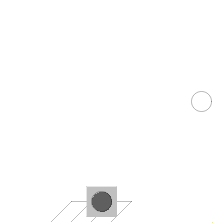 Partial Model Modelica.Mechanics.Rotational.Interfaces.PartialOneFlangeAndSupport
Partial Model Modelica.Mechanics.Rotational.Interfaces.PartialOneFlangeAndSupport
This is a 1-dim. rotational component with one flange and a support/housing. It is used e.g., to build up parts of a drive train graphically consisting of several components.
If useSupport=true, the support connector is conditionally enabled
and needs to be connected.
If useSupport=false, the support connector is conditionally disabled
and instead the component is internally fixed to ground.
| Type | Name | Default | Description |
|---|---|---|---|
Boolean | useSupport | false | = true, if support flange enabled, otherwise implicitly grounded |
| Type | Name | Description |
|---|---|---|
Flange_b | flange | Flange of shaft |
Support | support | Support/housing of component |
 Partial Model Modelica.Mechanics.Rotational.Interfaces.PartialTwoFlangesAndSupport
Partial Model Modelica.Mechanics.Rotational.Interfaces.PartialTwoFlangesAndSupport
This is a 1-dim. rotational component with two flanges and a support/housing. It is used e.g., to build up parts of a drive train graphically consisting of several components.
If useSupport=true, the support connector is conditionally enabled
and needs to be connected.
If useSupport=false, the support connector is conditionally disabled
and instead the component is internally fixed to ground.
| Type | Name | Default | Description |
|---|---|---|---|
Boolean | useSupport | false | = true, if support flange enabled, otherwise implicitly grounded |
| Type | Name | Description |
|---|---|---|
Flange_a | flange_a | Flange of left shaft |
Flange_b | flange_b | Flange of right shaft |
Support | support | Support/housing of component |
 Partial Model Modelica.Mechanics.Rotational.Interfaces.PartialCompliant
Partial Model Modelica.Mechanics.Rotational.Interfaces.PartialCompliant
This is a 1-dim. rotational component with a compliant connection of two rotational 1-dim. flanges where inertial effects between the two flanges are neglected. The basic assumption is that the cut-torques of the two flanges sum-up to zero, i.e., they have the same absolute value but opposite sign: flange_a.tau + flange_b.tau = 0. This base class is used to built up force elements such as springs, dampers, friction.
| Type | Name | Description |
|---|---|---|
Flange_a | flange_a | Left flange of compliant 1-dim. rotational component |
Flange_b | flange_b | Right flange of compliant 1-dim. rotational component |
 Partial Model Modelica.Mechanics.Rotational.Interfaces.PartialCompliantWithRelativeStates
Partial Model Modelica.Mechanics.Rotational.Interfaces.PartialCompliantWithRelativeStates
This is a 1-dim. rotational component with a compliant connection of two rotational 1-dim. flanges where inertial effects between the two flanges are neglected. The basic assumption is that the cut-torques of the two flanges sum-up to zero, i.e., they have the same absolute value but opposite sign: flange_a.tau + flange_b.tau = 0. This base class is used to built up force elements such as springs, dampers, friction.
The relative angle and the relative speed are defined as preferred states. The reason is that for some drive trains, such as drive trains in vehicles, the absolute angle is quickly increasing during operation. Numerically, it is better to use relative angles between drive train components because they remain in a limited size. For this reason, StateSelect.prefer is set for the relative angle of this component.
In order to improve the numerics, a nominal value for the relative angle can be provided via parameter phi_nominal in the Advanced menu. The default is 1e-4 rad since relative angles are usually in this order and the step size control of an integrator would be practically switched off, if a default of 1 rad would be used. This nominal value might also be computed from other values, such as "phi_nominal = tau_nominal / c" for a rotational spring, if tau_nominal and c are more meaningful for the user.
See also the discussion State Selection in the User's Guide of the Rotational library.
| Type | Name | Default | Description |
|---|---|---|---|
Angle | phi_nominal | 1e-4 | Nominal value of phi_rel (used for scaling) |
StateSelect | stateSelect | StateSelect.prefer | Priority to use phi_rel and w_rel as states |
| Type | Name | Description |
|---|---|---|
Flange_a | flange_a | Left flange of compliant 1-dim. rotational component |
Flange_b | flange_b | Right flange of compliant 1-dim. rotational component |
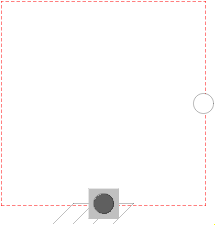 Partial Model Modelica.Mechanics.Rotational.Interfaces.PartialElementaryOneFlangeAndSupport
Partial Model Modelica.Mechanics.Rotational.Interfaces.PartialElementaryOneFlangeAndSupport
This is a 1-dim. rotational component with one flange and a support/housing. It is used to build up elementary components of a drive train with equations in the text layer.
If useSupport=true, the support connector is conditionally enabled
and needs to be connected.
If useSupport=false, the support connector is conditionally disabled
and instead the component is internally fixed to ground.
Extends from Modelica.Icons.ObsoleteModel (Icon for classes that are obsolete and will be removed in later versions).
| Type | Name | Default | Description |
|---|---|---|---|
Boolean | useSupport | false | = true, if support flange enabled, otherwise implicitly grounded |
| Type | Name | Description |
|---|---|---|
Flange_b | flange | Flange of shaft |
Support | support | Support/housing of component |
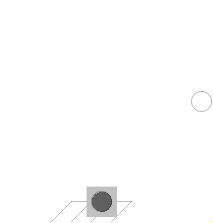 Partial Model Modelica.Mechanics.Rotational.Interfaces.PartialElementaryOneFlangeAndSupport2
Partial Model Modelica.Mechanics.Rotational.Interfaces.PartialElementaryOneFlangeAndSupport2
This is a 1-dim. rotational component with one flange and a support/housing. It is used to build up elementary components of a drive train with equations in the text layer.
If useSupport=true, the support connector is conditionally enabled
and needs to be connected.
If useSupport=false, the support connector is conditionally disabled
and instead the component is internally fixed to ground.
| Type | Name | Default | Description |
|---|---|---|---|
Boolean | useSupport | false | = true, if support flange enabled, otherwise implicitly grounded |
| Type | Name | Description |
|---|---|---|
Flange_b | flange | Flange of shaft |
Support | support | Support/housing of component |
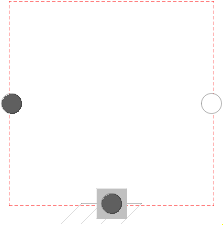 Partial Model Modelica.Mechanics.Rotational.Interfaces.PartialElementaryTwoFlangesAndSupport
Partial Model Modelica.Mechanics.Rotational.Interfaces.PartialElementaryTwoFlangesAndSupport
This is a 1-dim. rotational component with two flanges and a support/housing. It is used to build up elementary components of a drive train with equations in the text layer.
If useSupport=true, the support connector is conditionally enabled
and needs to be connected.
If useSupport=false, the support connector is conditionally disabled
and instead the component is internally fixed to ground.
Extends from Modelica.Icons.ObsoleteModel (Icon for classes that are obsolete and will be removed in later versions).
| Type | Name | Default | Description |
|---|---|---|---|
Boolean | useSupport | false | = true, if support flange enabled, otherwise implicitly grounded |
| Type | Name | Description |
|---|---|---|
Flange_a | flange_a | Flange of left shaft |
Flange_b | flange_b | Flange of right shaft |
Support | support | Support/housing of component |
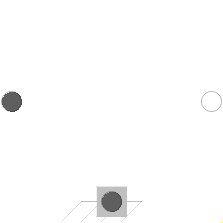 Partial Model Modelica.Mechanics.Rotational.Interfaces.PartialElementaryTwoFlangesAndSupport2
Partial Model Modelica.Mechanics.Rotational.Interfaces.PartialElementaryTwoFlangesAndSupport2
This is a 1-dim. rotational component with two flanges and a support/housing. It is used to build up elementary components of a drive train with equations in the text layer.
If useSupport=true, the support connector is conditionally enabled
and needs to be connected.
If useSupport=false, the support connector is conditionally disabled
and instead the component is internally fixed to ground.
| Type | Name | Default | Description |
|---|---|---|---|
Boolean | useSupport | false | = true, if support flange enabled, otherwise implicitly grounded |
| Type | Name | Description |
|---|---|---|
Flange_a | flange_a | Flange of left shaft |
Flange_b | flange_b | Flange of right shaft |
Support | support | Support/housing of component |
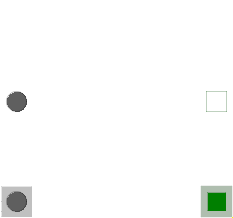 Partial Model Modelica.Mechanics.Rotational.Interfaces.PartialElementaryRotationalToTranslational
Partial Model Modelica.Mechanics.Rotational.Interfaces.PartialElementaryRotationalToTranslational
This is a 1-dim. rotational component with
This model is used to build up elementary components of a drive train transforming rotational into translational motion with equations in the text layer.
If useSupportR=true, the rotational support connector is conditionally enabled
and needs to be connected.
If useSupportR=false, the rotational support connector is conditionally disabled
and instead the rotational part is internally fixed to ground.
If useSupportT=true, the translational support connector is conditionally enabled
and needs to be connected.
If useSupportT=false, the translational support connector is conditionally disabled
and instead the translational part is internally fixed to ground.
| Type | Name | Default | Description |
|---|---|---|---|
Boolean | useSupportR | false | = true, if rotational support flange enabled, otherwise implicitly grounded |
Boolean | useSupportT | false | = true, if translational support flange enabled, otherwise implicitly grounded |
| Type | Name | Description |
|---|---|---|
Flange_a | flangeR | Flange of rotational shaft |
Flange_b | flangeT | Flange of translational rod |
Support | supportR | Rotational support/housing of component |
Support | supportT | Translational support/housing of component |
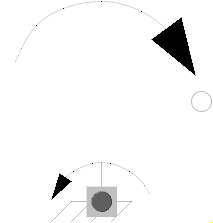 Partial Model Modelica.Mechanics.Rotational.Interfaces.PartialTorque
Partial Model Modelica.Mechanics.Rotational.Interfaces.PartialTorque
Partial model of torque that accelerates the flange.
If useSupport=true, the support connector is conditionally enabled
and needs to be connected.
If useSupport=false, the support connector is conditionally disabled
and instead the component is internally fixed to ground.
Extends from Modelica.Mechanics.Rotational.Interfaces.PartialElementaryOneFlangeAndSupport2 (Partial model for a component with one rotational 1-dim. shaft flange and a support used for textual modeling, i.e., for elementary models).
| Type | Name | Default | Description |
|---|---|---|---|
Boolean | useSupport | false | = true, if support flange enabled, otherwise implicitly grounded |
| Type | Name | Description |
|---|---|---|
Flange_b | flange | Flange of shaft |
Support | support | Support/housing of component |
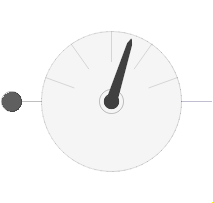 Partial Model Modelica.Mechanics.Rotational.Interfaces.PartialAbsoluteSensor
Partial Model Modelica.Mechanics.Rotational.Interfaces.PartialAbsoluteSensor
This is a partial model of a 1-dim. rotational component with one flange of a shaft in order to measure an absolute kinematic quantity in the flange and to provide the measured signal as output signal for further processing with the blocks of package Modelica.Blocks.
Extends from Modelica.Icons.RotationalSensor (Icon representing a round measurement device).
| Type | Name | Description |
|---|---|---|
Flange_a | flange | Flange of shaft from which sensor information shall be measured |
 Partial Model Modelica.Mechanics.Rotational.Interfaces.PartialRelativeSensor
Partial Model Modelica.Mechanics.Rotational.Interfaces.PartialRelativeSensor
This is a partial model for 1-dim. rotational components with two rigidly connected flanges in order to measure relative kinematic quantities between the two flanges or the cut-torque in the flange and to provide the measured signal as output signal for further processing with the blocks of package Modelica.Blocks.
Extends from Modelica.Icons.RotationalSensor (Icon representing a round measurement device).
| Type | Name | Description |
|---|---|---|
Flange_a | flange_a | Left flange of shaft |
Flange_b | flange_b | Right flange of shaft |
 Partial Model Modelica.Mechanics.Rotational.Interfaces.PartialFriction
Partial Model Modelica.Mechanics.Rotational.Interfaces.PartialFriction
Basic model for Coulomb friction that models the stuck phase in a reliable way.
This procedure is implemented in a "clean" way by state events and leads to a mixed continuous/discrete systems of equations if friction elements are dynamically coupled which have to be solved by appropriate numerical methods. The method is described in (see also a short sketch in UsersGuide.ModelingOfFriction):
| Type | Name | Default | Description |
|---|---|---|---|
AngularVelocity | w_small | 1e+10 | Relative angular velocity near to zero if jumps due to a reinit(..) of the velocity can occur (set to low value only if such impulses can occur) |
Real | K_locked | 0 | Gain driving the relative motion between the friction elements to 0 when locked. This parameter should only be non-zero when using the model with fixed-step integration |